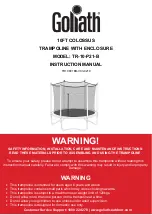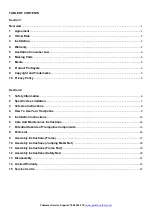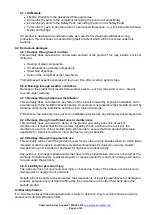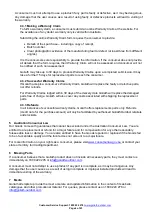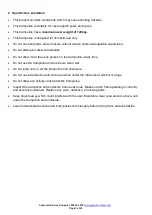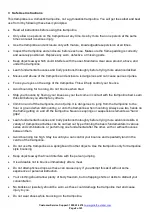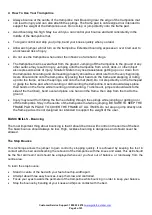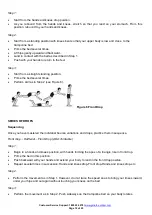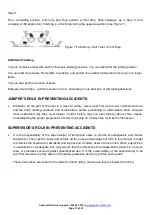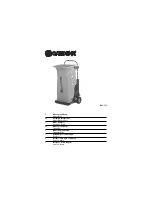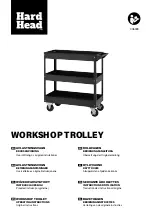
Customer Service Support: 1800 224 278 |
Page 6 of 23
Section 2
1 Safety Information
Trampolines are great fun, encourage the development of gross motor skills, provide opportunities for
physical activity and present users with manageable challenges to find and test their limits. However,
like many physical activities, trampoline use involves potential risk of injury, particularly if the equipment
is used improperly.
Injury surveillance and hospital admissions data shows that trampolines feature frequently in injury
presentations and admissions. Children under 14 years of age account for about 90% of all trampoline-
related injuries. 28% of the trampoline-related injuries were sustained by children under five years of
age and more than a third of the injuries related to multi-users. (Victorian Injury Surveillance Unit -
Hazard 75, Autumn 2013, pg. 3).
The following points are important to note:
•
Injury data indicates that people can be severely injured if they land on an unprotected
trampoline frame or springs or if they fall from the trampoline. Impact attenuation systems such
as pads are intended to minimize the risk of injury and enclosures are intended to stop people
falling off the trampoline.
Ensure pads (where they are required) and enclosures are attached to the trampoline before use.
•
The risk of injury increases when more than one person at a time bounces on a trampoline.
Smaller children are at increased risk when jumping with adults and/or larger children, for
example, a ‘double bounce’ dramatically increases the energy transferred to the smaller body
and children’s legs have been broken and severe spinal injuries have occurred as a result.
Ensure only one person at a time bounces on the trampoline.
•
Children are often unable to identify hazards and do not have a well-developed ability to assess
risk and may, if left unsupervised, be at more risk of injury.
Always supervise children while they are using the trampoline.
•
Over-confidence can lead to injury.
Learn fundamental bounces first before trying more complex manoeuvres.
•
Inappropriate clothing can cause injury.
Clothing should allow plenty of body movement without flapping loosely and becoming a
distraction to the jumper.
Wear clothing free of drawstrings, hooks, loops or anything that could get caught while using the
trampoline and result in entanglement or strangulation. Buckles, jewellery and belts should not
be worn, as these may damage the trampoline mat or cause injury to the jumper if they become
caught in the fabric of the trampoline. Shoes should be removed as they may damage the bed
and increase the risk of injury.
Better design, good construction and improved safety features go a long way toward minimizing the
hazards associated with trampoline use; however, trampolines need to be used, cared for and
maintained appropriately to ensure the benefits of these features continue throughout the life of the
product.
All Goliath trampolines are tested and compliant to Australian Safety Standard AS4989:2006

